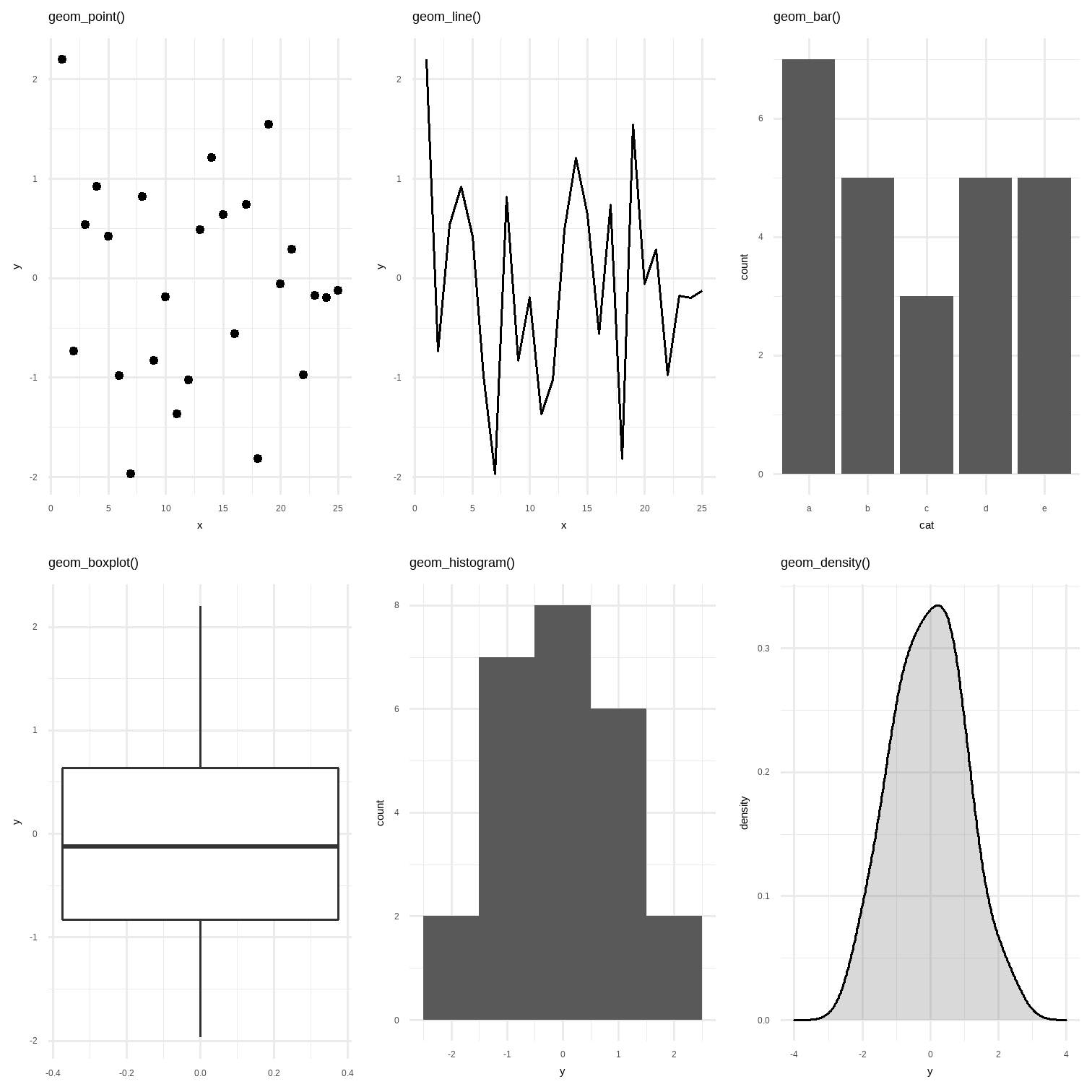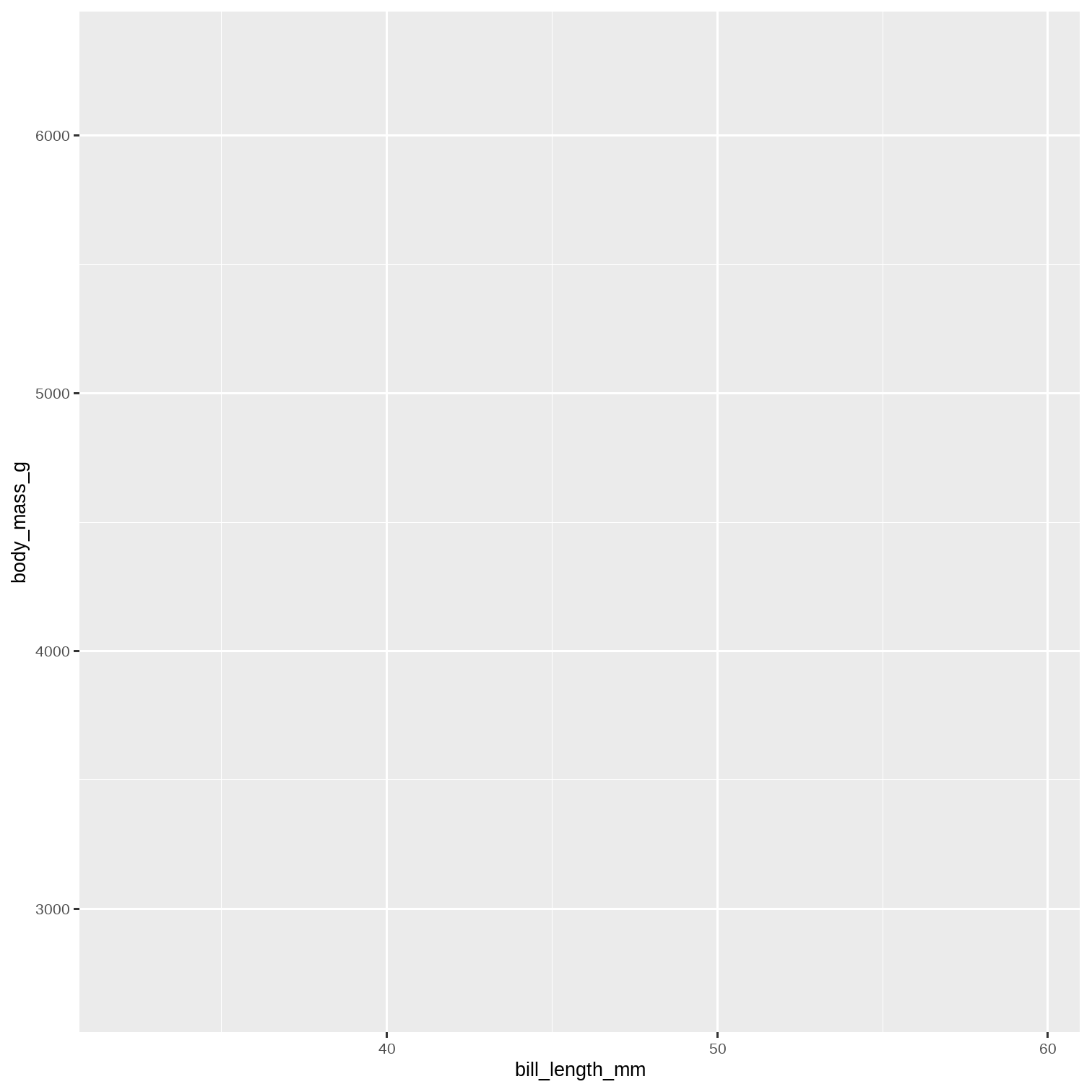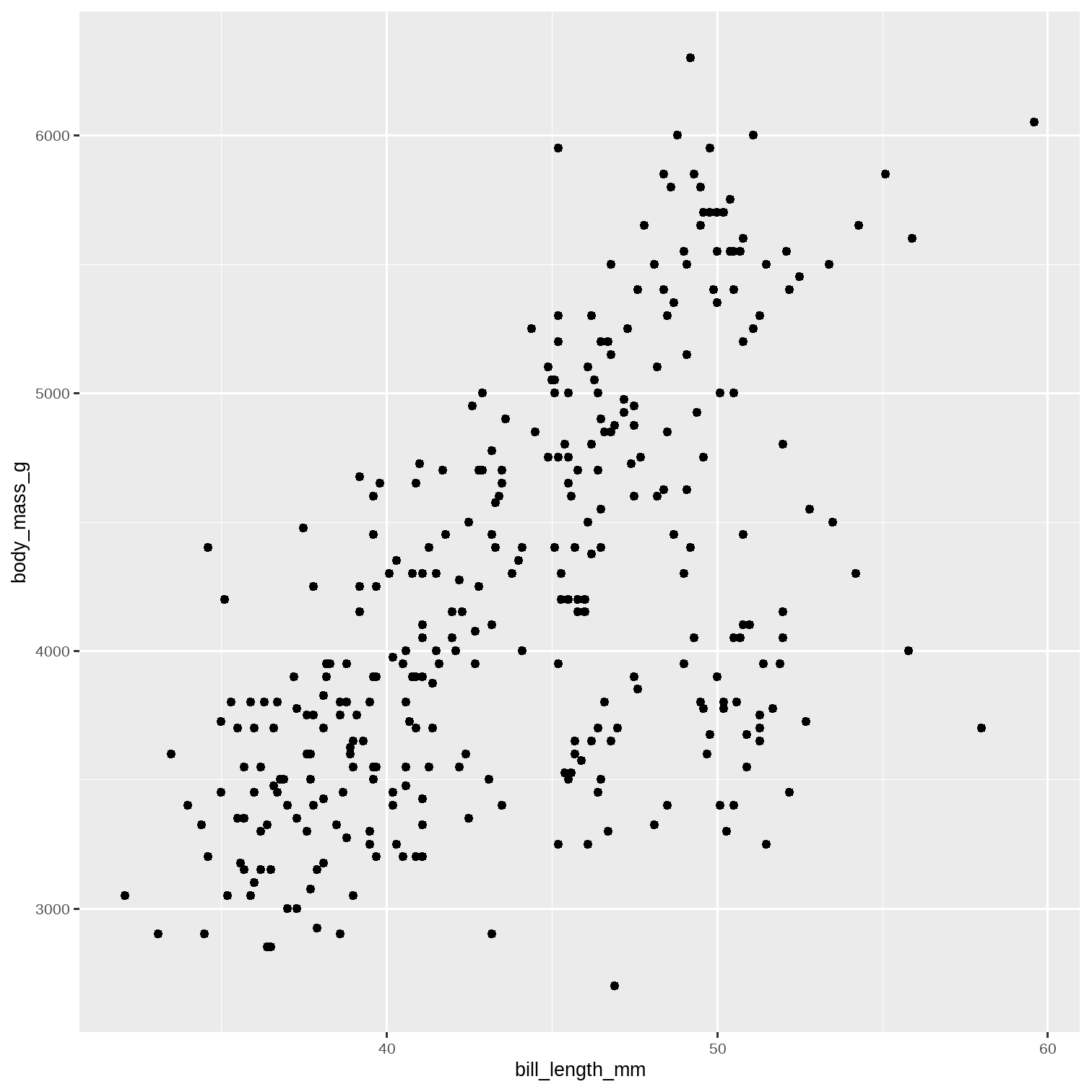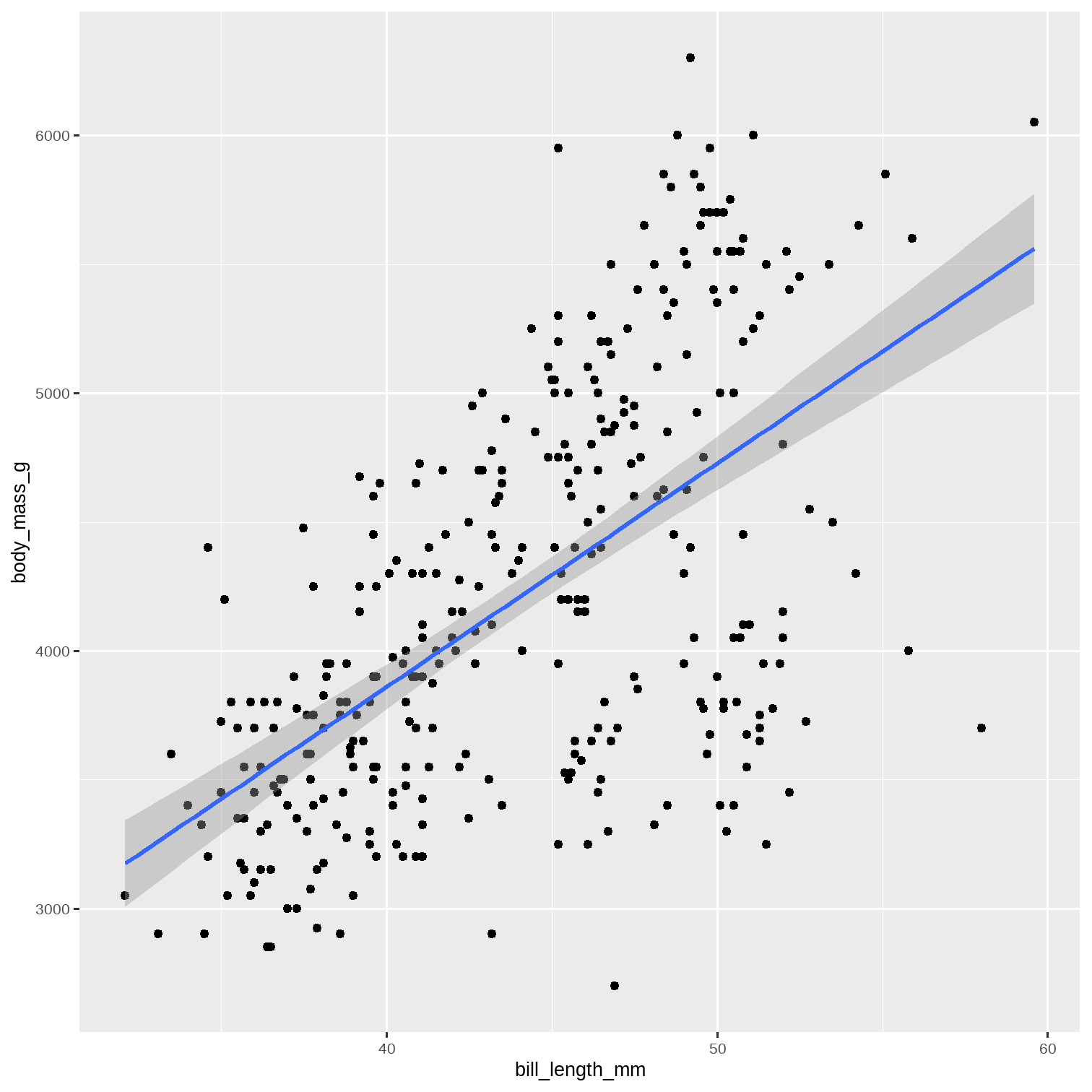Slides 04 - Metaphors with Graphics
From Code to Geometry
Arvind Venkatadri
Srishti Manipal Institute
(2022-08-09)
How does one read Shakespeare?

To code or not to code, that is the question...
What is a Grammar of Graphics?
Code looks and reads like English.
Has verbs, nouns, some adjectives....
What is a Grammar of Graphics?
Code looks and reads like English.
Has verbs, nouns, some adjectives....
- Describes Information/ideas/concepts from any source domain.
What is a Grammar of Graphics?
Code looks and reads like English.
Has verbs, nouns, some adjectives....
Describes Information/ideas/concepts from any source domain.
GEOMETRY as the target domain : What comes out of R is predominantly "geometry"
How do we express visuals in words?
- Data to be visualized
How do we express visuals in words?
- Data to be visualized
- Geometric objects that appear on the plot
How do we express visuals in words?
- Data to be visualized
- Geometric objects that appear on the plot
- Aesthetic mappings from data to visual component
How do we express visuals in words?
- Data to be visualized
- Geometric objects that appear on the plot
- Aesthetic mappings from data to visual component
- Statistics transform data on the way to visualization
How do we express visuals in words?
- Data to be visualized
- Geometric objects that appear on the plot
- Aesthetic mappings from data to visual component
- Statistics transform data on the way to visualization
- Coordinates organize location of geometric objects
How do we express visuals in words?
- Data to be visualized
- Geometric objects that appear on the plot
- Aesthetic mappings from data to visual component
- Statistics transform data on the way to visualization
- Coordinates organize location of geometric objects
- Scales define the range of values for aesthetics
How do we express visuals in words?
- Data to be visualized
- Geometric objects that appear on the plot
- Aesthetic mappings from data to visual component
- Statistics transform data on the way to visualization
- Coordinates organize location of geometric objects
- Scales define the range of values for aesthetics
- Facets group into subplots
The Essence of ggplot
all ggplot2
aes(x = , y = )(aesthetics)aes(x = , y = , color = )(add color)aes(x = , y = , size = )(add size)+ facet_wrap(~ )(facetting)+ scale_( add a scale)
gg is for Grammar of Graphics
Data
Aesthetics
Geoms
+ geom_*()
The Five-Named Graphs
- Scatterplot:
geom_point() - Line graph:
geom_line() - Histogram:
geom_histogram() - Boxplot:
geom_boxplot() - Bar graph:
geom_bar()orgeom_col(see Lab 02)
Chunk : penguins
head(penguins)## # A tibble: 6 × 8## species island bill_length_mm bill_depth_mm flipper_length_mm body_mass_g sex year## <fct> <fct> <dbl> <dbl> <int> <int> <fct> <int>## 1 Adelie Torgersen 39.1 18.7 181 3750 male 2007## 2 Adelie Torgersen 39.5 17.4 186 3800 female 2007## 3 Adelie Torgersen 40.3 18 195 3250 female 2007## 4 Adelie Torgersen NA NA NA NA <NA> 2007## 5 Adelie Torgersen 36.7 19.3 193 3450 female 2007## 6 Adelie Torgersen 39.3 20.6 190 3650 male 2007We see the first few rows of the dataset penguins. We see that there are a few NA data observations too. Let us remove them for now.
penguins <- penguins %>% drop_na()Chunk: Mapping
ggplot(penguins)
Chunk: Mapping
ggplot(data = penguins, mapping = aes(x = bill_length_mm, y = body_mass_g))
Chunk: Mapping
ggplot(data = penguins, mapping = aes(x = bill_length_mm, y = body_mass_g)) + geom_point()
Chunk: Mapping
ggplot(data = penguins, mapping = aes(x = bill_length_mm, y = body_mass_g)) + geom_point() + geom_smooth(method = "lm")
Chunk: Geom_Point_Position_Colour
ggplot(data = penguins)
Chunk: Geom_Point_Position_Colour
ggplot(data = penguins, aes(x = bill_length_mm, y = body_mass_g, color = island))We can leave out the "mapping" word and just use aes .
Why is there no plot?
🤔 💭
Right !! We have not used a geom command yet!!

Chunk: Geom_Point_Position_Colour
ggplot(data = penguins, aes(x = bill_length_mm, y = body_mass_g, color = island)) + geom_point() + ggtitle("A point geom with position, color aesthetics")Note that the points are located by position coordinates on both x and y axis, and coloured by the island variable.

Chunk: Geom_Point_Position_Colour
ggplot(data = penguins, aes(x = bill_length_mm, y = body_mass_g, color = island)) + geom_point(size = 4) + ggtitle("A point geom with position color and size aesthetics")Note that the points are located by position coordinates on both x and y axis, and coloured by the island variable.
And we've fixed size = 4!

Alpha
diamonds %>% # Sample some 20% of the data slice_sample(prop = 0.2) %>% ggplot(.) + geom_point(aes(x = carat, y = price))Are the points all overlapping? Can we see them better?

Alpha
diamonds %>% # Sample some 20% of the data slice_sample(prop = 0.2) %>% ggplot(.) + geom_point(aes(x = carat, y = price), # alpha outside the aes() !!! alpha = 0.2) + labs(title = "Points plotted with Alpha")Are the points all overlapping? Can we see them better?

Chunk: Box Plot
ggplot(diamonds) + geom_boxplot(aes(x = cut, y = price)) + labs(title = "Box Plot")
Chunk: Box Plot
ggplot(diamonds) + geom_boxplot(aes(x = cut, y = price, fill = cut)) + labs(title = "Box Plot")
Chunk: Geom_Bar_1
ggplot(data = penguins)
Chunk: Geom_Bar_1
ggplot(data = penguins) + aes(x = species)
Chunk: Geom_Bar_1
ggplot(data = penguins) + aes(x = species) + geom_bar() + ggtitle("A bar geom with position and height aesthetics")The bars are plotted with positions on the x-axis, defined by the species variable, and heights mapped to the y-axis.
How did the graph "know" the heights of the bars?
geom_bar has an internal count statistic computation.
Many geom_s have internal computation that are accessible to programmers.

Geom_Bar_Position_Stack_and_Dodge
When using more than a pair of variables with a bar chart, we have a few more position options:
ggplot(penguins, aes(x = species, fill = island))
Geom_Bar_Position_Stack_and_Dodge
When using more than a pair of variables with a bar chart, we have a few more position options:
ggplot(penguins, aes(x = species, fill = island)) + geom_bar() + ggtitle(label = "A stacked bar chart")The bars are coloured by the island variable and are stacked in position.

Geom_Bar_Position_Stack_and_Dodge
And here we use the dodge option:
ggplot(penguins, aes(x = species, fill = island)) + geom_bar(position ="dodge") + ggtitle(label = "A dodged bar chart")
Facetting
ggplot(penguins)
Facetting
ggplot(penguins) + aes(x = flipper_length_mm, y = body_mass_g)
Facetting
ggplot(penguins) + aes(x = flipper_length_mm, y = body_mass_g) + geom_point()
Facetting
ggplot(penguins) + aes(x = flipper_length_mm, y = body_mass_g) + geom_point() + facet_wrap(~island) + ggtitle("A point geom graph with facets")The graph has split into multiples, based on the number of islands.

Still more Facetting
ggplot(penguins) + aes(x = flipper_length_mm, y = body_mass_g) + geom_point()What if we have even more "factor" variables?
We have island and species...can we split further?

Still more Facetting
ggplot(penguins) + aes(x = flipper_length_mm, y = body_mass_g) + geom_point() + facet_grid(species~island) + ggtitle("A point geom graph with grid facets")The graph has split into multiples, based on the number of islands and the number of species.

And shall we look briefly at colour?
Finally...Colour !! ( Just a bit )
diamonds %>% slice_sample(prop = 0.2) %>% ggplot(.) + geom_point(aes(x = carat, y = price))
Finally...Colour !! ( Just a bit )
diamonds %>% slice_sample(prop = 0.2) %>% ggplot(.) + geom_point(aes(x = carat, y = price, colour = cut), size = 3) + scale_colour_brewer(palette = "Set3") + labs(title = "Brewer Colour Pallette (Set3)")We are using the RColorBrewer package here.
Type RColorBrewer::display.brewer.all() in your Console and see what palettes are available.

Chunk: Colour !! ( Just a bit )
diamonds %>% slice_sample(prop = 0.2) %>% ggplot(.) + geom_point(aes(x = carat, y = price, colour = cut), size = 3) + scale_colour_viridis_d() + labs(title = "Viridis Palette", subtitle = "The Default in ggplot")
Chunk: Colour !! ( Just a bit )
diamonds %>% slice_sample(prop = 0.2) %>% ggplot(.) + geom_point(aes(x = carat, y = price, colour = cut), size = 3) + scale_colour_viridis_d(option = "magma") + labs(title = "Viridis Palette, Option Magma")
Chunk: Colour !! ( Just a bit )
diamonds %>% slice_sample(prop = 0.2) %>% ggplot(.) + geom_point(aes(x = carat, y = price, colour = cut), size = 3) + scale_colour_viridis_d(option = "inferno") + labs(title = "Viridis Palette, Option Inferno")
Conclusion
ggplottakes a dataframe/tibble as the data argument- The
aes-thetic arguments can bex,y,colour,shape,alphafor example... - The
geom_*()commands specify the kind of plot - Together, the
ggplotpackage offers a Grammar of near-English commands which allow us to plot data in various ways.